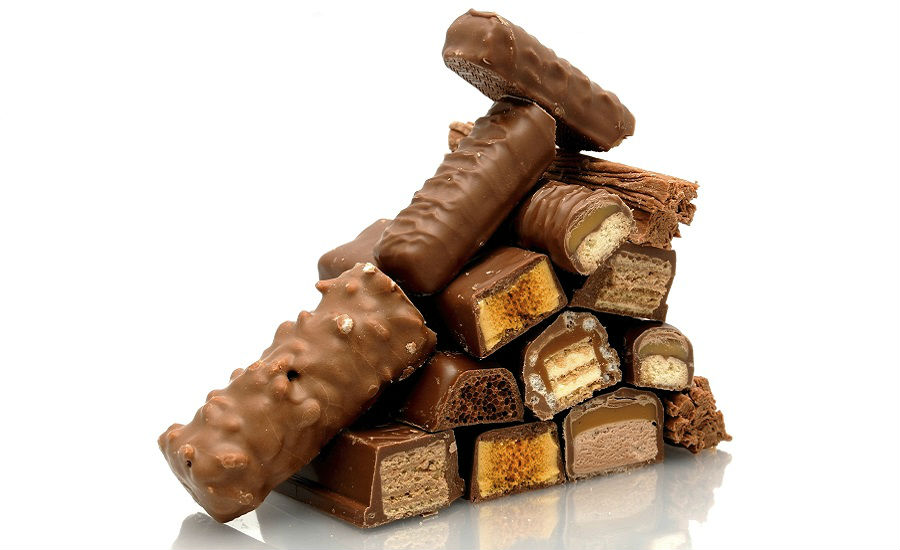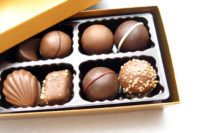U.S. consumers are sweet on bite-sized and fun-sized chocolate formats, according to new research from Mintel.
After surveying 1,854 adults who who purchased chocolate online in the three months leading to February 2018, the research firm found nearly half (49 percent) of buyers are most likely to say they would like to see more chocolate in mini-sized bars or bites.
Additionally, nine in 10 chocolate buyers agree it’s OK to indulge occasionally in chocolate, while 63 percent say it’s important to limit chocolate consumption. Fun-sized varieties could be just what consumers are looking for, as three quarters of buyers say that single-serving or bite-sized chocolate is a good way to control portions.
While nostalgia has 63 percent of chocolate buyers reaching for the same kinds of chocolate today that they did as a kid, there is an opportunity for premium and innovative varieties to own a larger share of the market. More than three-quarters (76 percent) of chocolate buyers say it’s worth it to pay a little more money for premium chocolate. What’s more, among the top types of chocolate products chocolate buyers would like to see more of are unique sweet flavors (31 percent), savory flavors (29 percent) and those with functional benefits such as truffles with good fats (30 percent) and added protein (18 percent).
Overall, total U.S. retail sales of chocolate confectionery are estimated to have grown 15 percent since 2012 to reach $18.5 billion in 2018. Seasonal chocolate is the fastest growing segment, with sales forecast to reach $3.9 billion in 2018 and growing 29 percent since 2012.
“Chocolate confectionery is available in nearly infinite forms, flavors and combinations, but many chocolate purchasers gravitate to what they know,” said John Owen, senior food and drink analyst at Mintel. “While bite-sized chocolate may get credit for being a good way to limit consumption, the munchability and shareability of mini-sized products might actually make the form a good way to drive increased consumption with consumers reaching for an extra handful.
“Chocolate’s continued sales growth signals that consumers remain open to small treats, even as they strive to eat healthier overall. Its status as a permissible indulgence and unique craveability give chocolate ample room for further growth and premiumization.”
Americans are eating more chocolate and less sugar confectionery in 2018
It seems Americans will be indulging in less non-chocolate confectionery and more chocolate this Halloween. While chocolate buyers are more likely to say they’re buying more chocolate in 2018 than a year ago (21 percent vs. 17 percent buying less), non-chocolate confectionery may be making it into less trick or treat bags. More than one quarter (27 percent) of non-chocolate confectionery consumers say they’re eating less today than last year (vs. 15 percent eating more).
While reducing sugar (61 percent) and calories (44 percent) are the leading reasons why consumers are eating less candy, they are embracing the category’s indulgent side. In fact, non-chocolate confectionery eaters are more than twice as likely to say that it’s important for non-chocolate candy to look indulgent (33 percent) than for it to be low/no sugar (14 percent). For many, ignorance is bliss when it comes to candy’s healthfulness as under one in five (18 percent) candy eaters say they read the nutritional information on non-chocolate confectionery.
Health concerns aside, it seems most kids across the country will get to indulge in their hard-earned candy this Halloween. Mintel research reveals that less than half (42 percent) of parents who eat candy say that they limit the amount of candy that their kids eat. Parents of younger kids are keeping a more watchful eye as the percentage rises to 53 percent of parents of kids aged 5 and under.
“Halloween is universally known as a holiday where kids and parents alike indulge their desire for sweet treats, but our research shows that many consumers are shifting away from candy due to health concerns,” says Beth Bloom, associate director, food and drink, Mintel. “While the majority of parents aren’t keeping a strict watch over their kids’ candy consumption, many are looking for some help in making smarter choices for their kids. Chocolate and non-chocolate confectionery options that are sweetened with fruit and/or made with more natural formulations could become more comfortable go-tos for parents.”
Chewy candy innovation sugar coats slowed category growth
Despite the fact that some consumers are eating less candy, product innovation has helped the category see sales growth over the last six years. Total U.S. sales of non-chocolate confectionery are estimated to have grown 15 percent since 2012, reaching an estimated $8 billion in 2018, driven by chewy candy — the fastest growing segment.
Sales of chewy candy are estimated to reach $4.3 billion in 2018, a 36 percent increase since 2012. New product development has helped the chewy candy segment see sales rise as new product launches of chewy candy in the U.S. grew 83 percent over the last five years, according to Mintel Global New Products Database (GNPD).
“Sales growth in the non-sugar confectionery category has slowed over the past five years as health concerns rise, but has stayed afloat as consumers continue to value the indulgent side of candy,” Bloom said. “Chewy candy specifically has sugar coated the category’s slowed growth as a result of strong innovation efforts from brands in the segment. To increase consumption, non-chocolate confectionery brands should focus efforts on encouraging permissible indulgence through sugar reduction and adding premium offerings, such as new flavors and textures, to their product lineup.”




